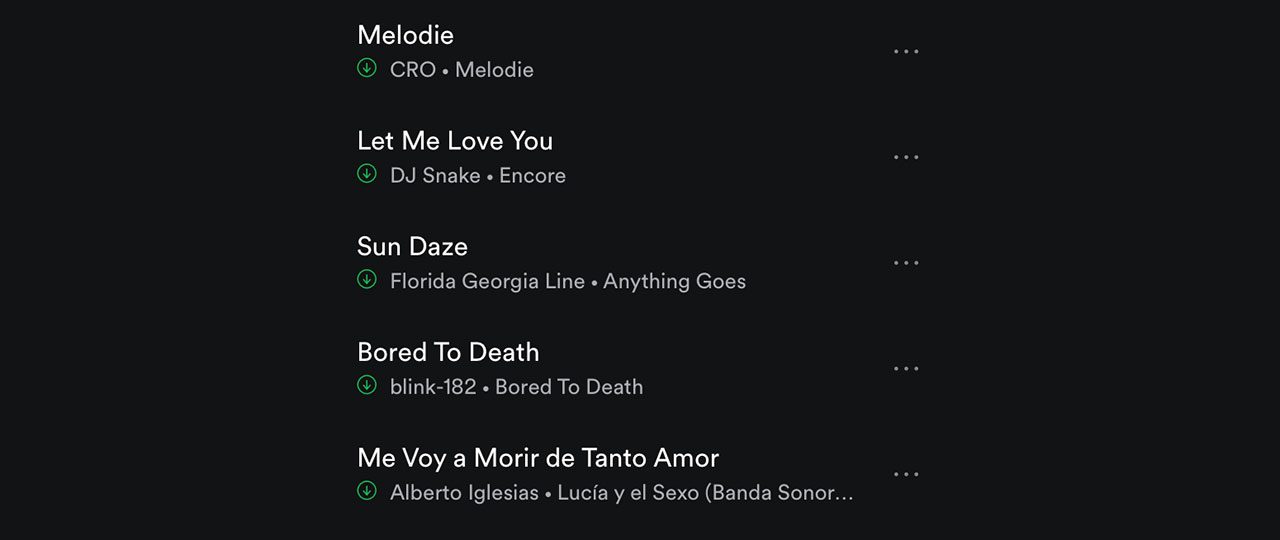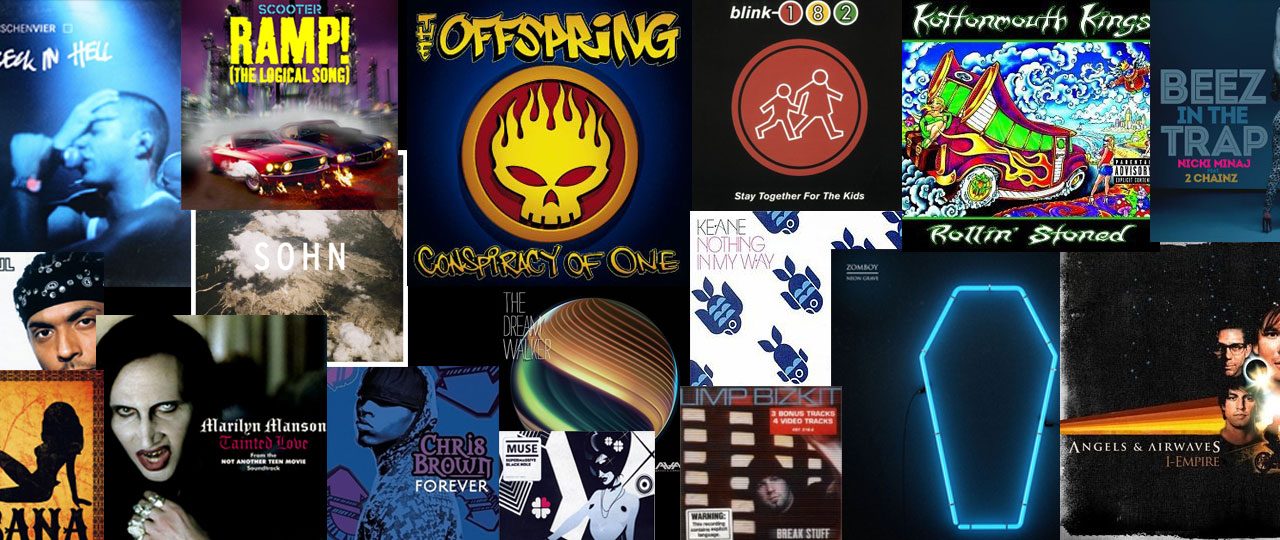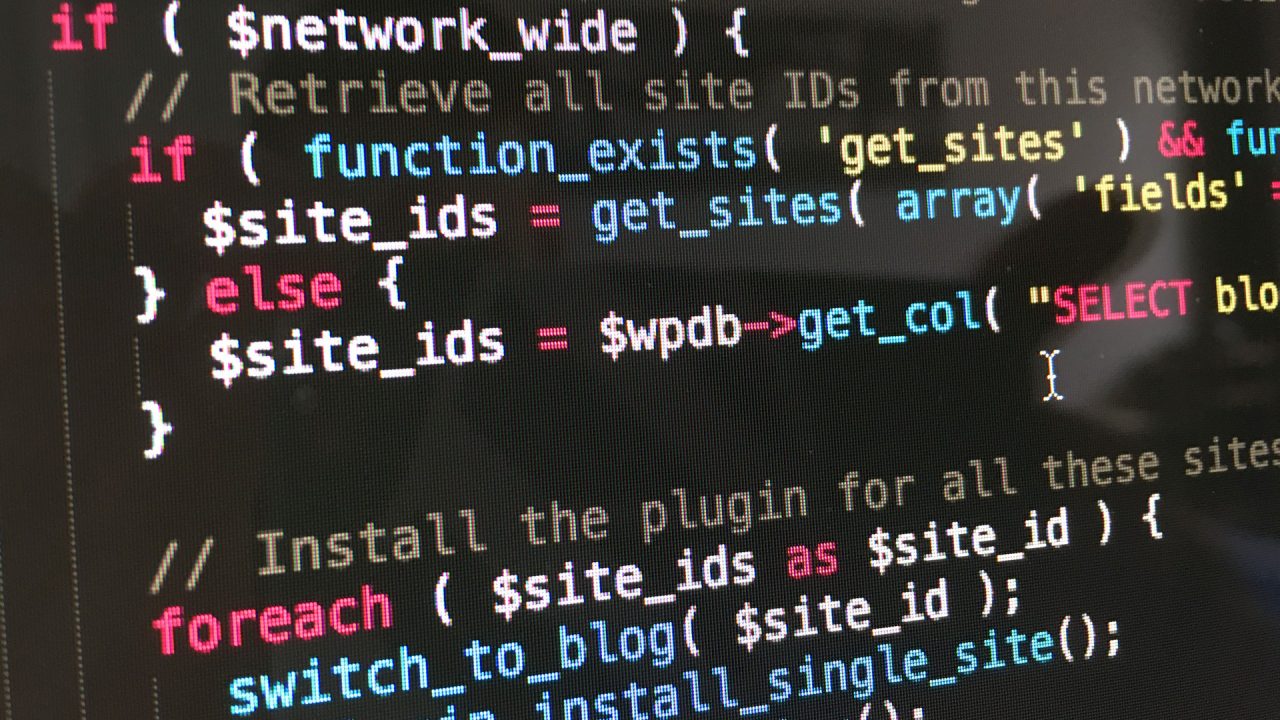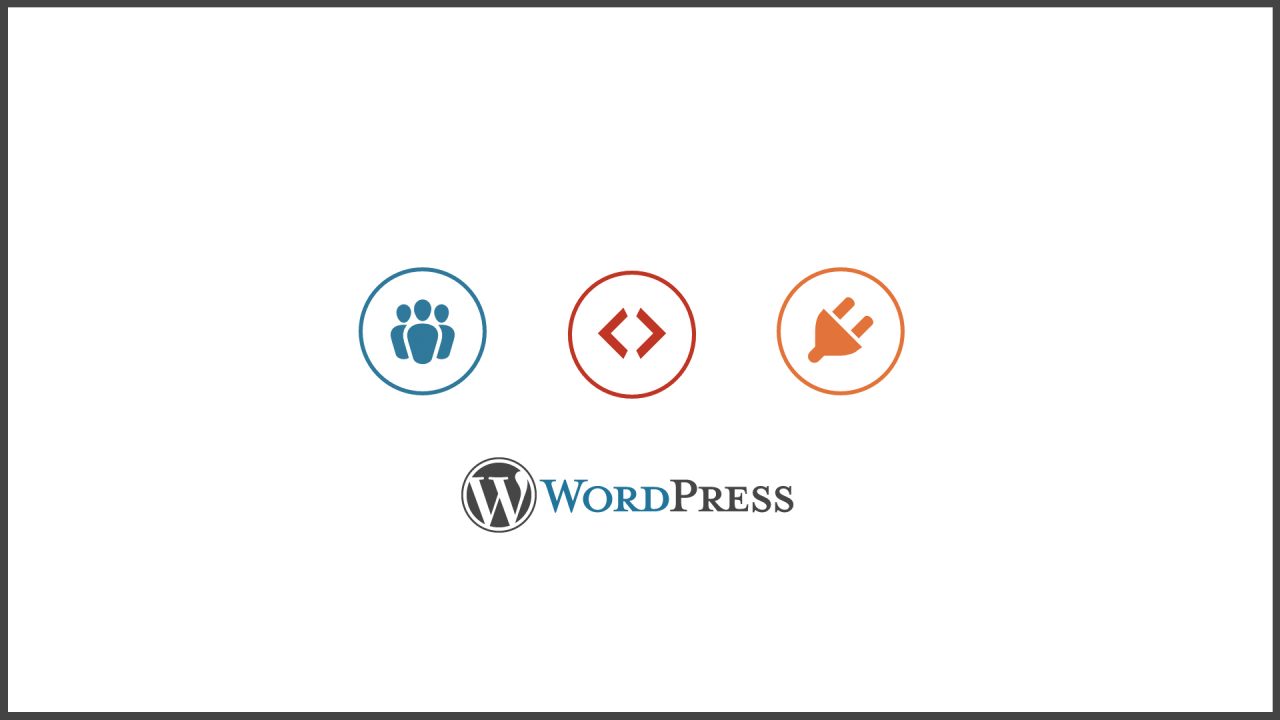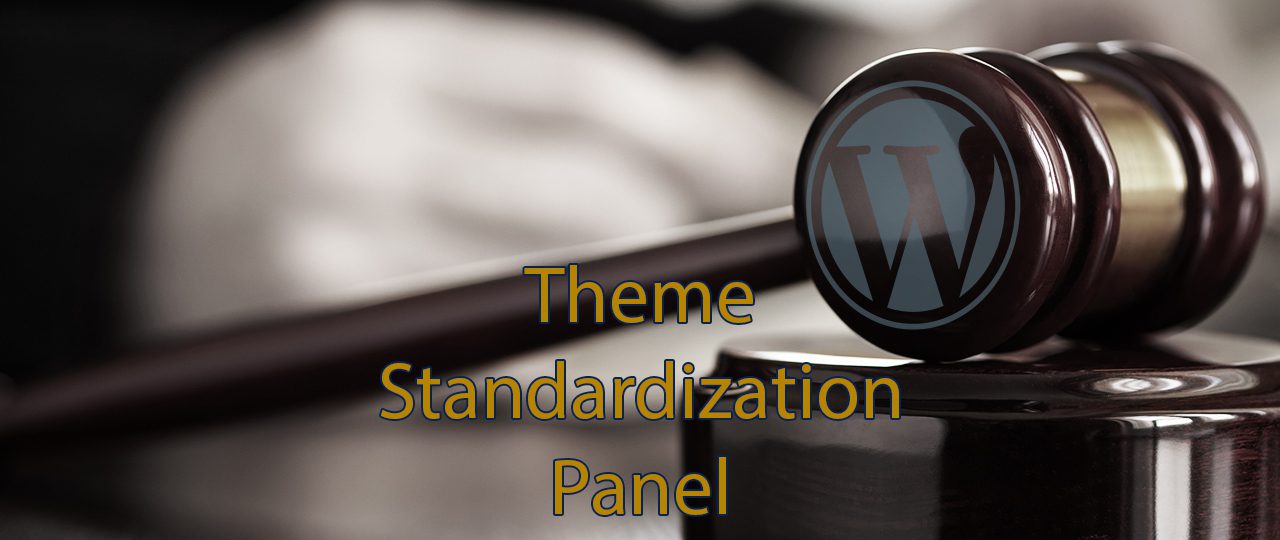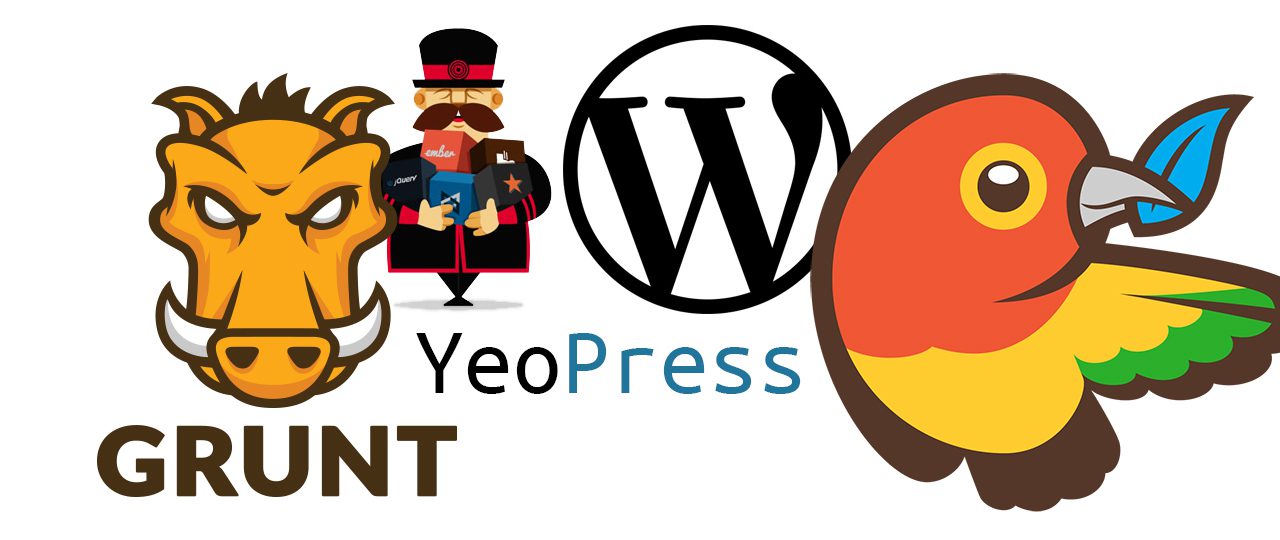For this year, I wanted to take some time to write down some notes on things that I would like to prioritize in my life. Just as how WordPress is now putting the main efforts into three major focuses, I wanted to separate mine into three major focuses as well. For 2017, these are going to be health, contributing and relationships. This is the first post I have ever written like this, and for the most part it will be a list of things I want to pursue. I would like to be able to return to this post at any given time to remind myself of these things and also to write a summary by the end of the new year in relation to which of these goals I have accomplished, in which points I have improved and which I should probably put more effort into.
Blog
-
I cannot believe that my most-listened track is actually a German song.
-
Music is a very important part of my life. I’m sure that is the case for many people, yet I wanted to explicitly mention it in this post. I listen to music during almost my entire work day, I have been playing piano since I was 8 years old and I also write songs occasionally and produce a few things using tools like Cubase and such. So yesterday I had the thought of looking back and thinking about the songs that I have listened to over all the years, songs that may even have shaped me in a way. I asked myself whether I could determine a song for every year that I associate the most with that time in my life. Things like that are just something I’m interested in, for example I’ve also been keeping track of my musical listening habits through Last.fm since 2007. It was also very nice to take some time to dive into old memories. So in this post I’m putting the list of songs out there. This is kind of a very personal post in some cases; maybe you’re just interested in such things the same way as I am, or you are curious about music recommendations, or you would like to know me better. For me the reason of writing this is that I simply want to keep track – after all, people used to call blogs weblogs, and that’s what I’m doing here – logging my favorite songs for each year of my life. Well, not my entire life: I will start with the year 2000 (I was 10 years old then), since I can’t quite recall anything before that and it would mostly have been entirely charts music anyway – and you will notice that especially in the first years of the list, my musical taste was still evolving. 🙂 By the way, to start things off, I’m pretty sure that I can say that German band Rammstein has been the only constant for as long as I can remember: Although none of their songs is present in the following list, I have listened to them at the same time I listened to Britney Spears, and I still listen to them now from time to time. But now, here’s the list of my favorite songs for each year as far as I can remember. Some of the years I would say there was more than 1 song I could have put there, but I think what I have there is a pretty good representation of my taste in music and also events in my life. Please note in advance that the songs represent what I’ve listened to for each year – it doesn’t necessarily mean that it was released in that year.
-
We hate SVN. At least most of us do. We all love GitHub (or Bitbucket, GitLab or similar). Yet, we wanna do WordPress plugins and put them up in the plugin repository.
There comes a time when everyone needs to get in touch with SVN, which is not wrong. As a developer, you should be familiar with it so that you can contribute to WordPress Core. 🙂 But using SVN to manage your plugin is a pain, especially since you probably have all development happen on a platform like GitHub. Fortunately, it doesn’t need to be like that. There are ways to deploy new plugin releases without even knowing that SVN is being used. Even if you love SVN to death, a deploy script for your plugins is worth using – let me introduce one to you in this post.
-
If you’ve been getting your way around with WordPress, you have probably heard of that thing called Multisite. Multiple web sites in one WordPress installation, that is. You may also call it a network of sites. If you haven’t actually used it, that’s another issue – maybe you have not (yet) come across a project where Multisite would have been the right fit. (In any case, I would encourage you to try it out on your dev environment then.)
This post is not about Multisite though. It’s about how you can make your regular plugin that you would like to write or might have written years ago compatible with Multisite. Because even if your plugin does not do anything related to Multisite in any way, there are some things to take care of, in particular you need to take care of your plugin’s activation / deactivation / uninstallation routines (if you have something like it in your plugin). Otherwise you are locking out some users from using your plugin, and you certainly don’t want that, I’m sure. Now that you have read this, please don’t run away, it’s not something you need to spend days for – it might only take a few minutes, and if you don’t have any of these routines, there actually is nothing else to do to make the plugin compatible (at least not for the scope of this tutorial). But now, let’s get started!
-
WordCamp Europe 2016 is over – well, not quite for me, according to a saying that says it’s not over until you blog about it. A year after my first WordCamp, it was coming back to the continental WordCamp which certainly raised the bar for those to come.
#WCEU is not over until you blog about it! Share your stories, your take aways, your favorite moments with us!
— WordCamp Europe (@WCEurope) June 27, 2016
WordCamp Europe (a.k.a. WCEU) this year was held in Vienna, Austria from June 24-26, with an announced attendance count of about 2400 people – the largest WordCamp yet. It also had Matt Mullenweg and Mike Little, both co-founders of WordPress, attend their first WordCamp together in years. And it also had all the six lead developers of the project as well. It was held only a few days before the first beta of WordPress 4.6. It also had Wiener Schnitzel and other Vienna gourmet food per the location. A lot of perks here, so the expectations were high, and they were certainly met, maybe even more.
-
I haven’t blogged anything in almost two years now. Well, with one exception. About a year ago I posted about my experiences at my first WordCamp, WordCamp Europe 2015. Looking back, it totally made sense that, in a time of not blogging, I at least blogged exactly that – because it changed my life.
-
Last weekend, I attended my first WordCamp: it was WordCamp Europe 2015 which took place in Sevilla, Spain from June 26 – 28. One week later, I feel like I have processed my various impressions from there which I would like to share in this post.
-
A while ago I read this post by Yoast on implementing standardized theme hooks in WordPress so that plugin developers have a unified way to insert their content into a specific theme location. The ideas Yoast included there were, in my opinion, amazing – and I immediately thought that a thing like this should be pushed forward. I also found an interesting Github repository of a thing called “Theme Hook Alliance”, but unfortunately I was not able to contact anyone there and I had the impression that it is not maintained any longer. Although discussions exist about including standardized theme hooks in WordPress Core, it currently doesn’t look like such a feature could possibly be added soon. That’s why, based on the resources mentioned above, I took some time to figure out a set of guidelines that, like I think, would vastly improve the WordPress infrastructure if people maintained this standard: The “WP Theme Standardization Panel” defines these guidelines (in the Github repository you’ll find instructions and a reference file on how to implement them). There is no file that you must necessarily include in your theme, it is just a standard you should maintain in your theme. I hope that this makes its way around so that WordPress developers start discussing about it, adding useful ideas and (best case) implementing it into their themes. And this is in no way a finished set of ideas – please take part in improving as much as there is to improve!
-
I’ve been developing for WordPress over a few years now. I love the simplicity of the system (compared to other content management systems) and that it is nevertheless as powerful as all of its competitors. However, one thing always annoyed me, and I bet everyone else too: Setting it up is just a pain. Not because it is in any way hard, but because it costs some time. It’s only about 10 minutes maximum, but I didn’t want to invest this time doing the exact same thing for any web site I set up. Yeah, it’s just 10 minutes – but you probably heard that developers are lazy. You probably set up WordPress sites as well, so I don’t need to tell you this. But there is another way which I’ll illustrate in this tutorial. I will explain how you can set up your WordPress installation by executing just one single script in Terminal (you should have a basic understanding of how to use it before reading this article). Furthermore you will learn how to include a WordPress starter theme that has all the important tools built-in. But now let’s get started in kickstarting your projects!
